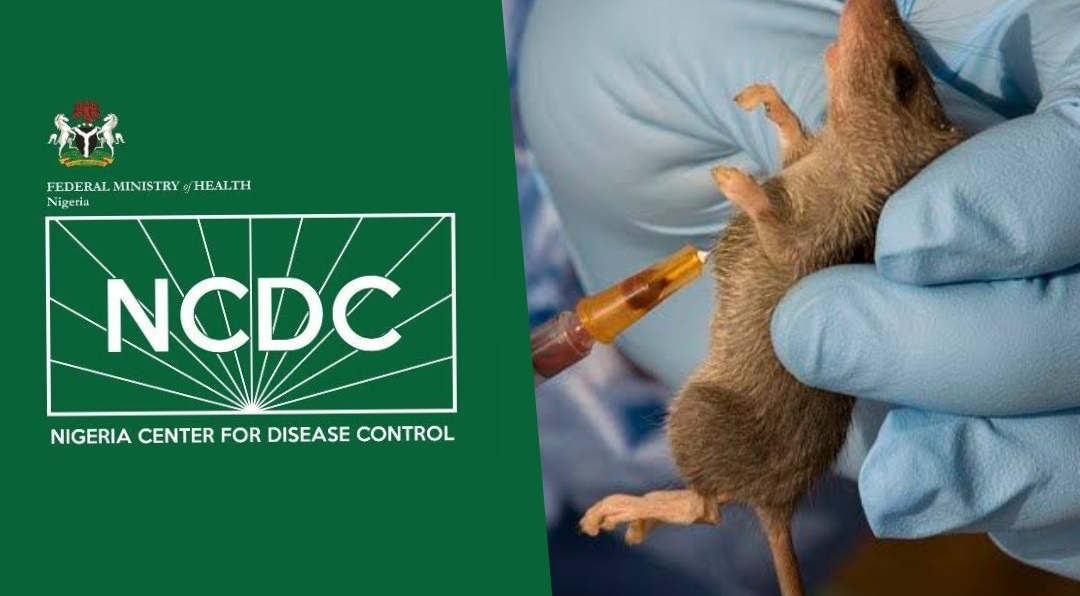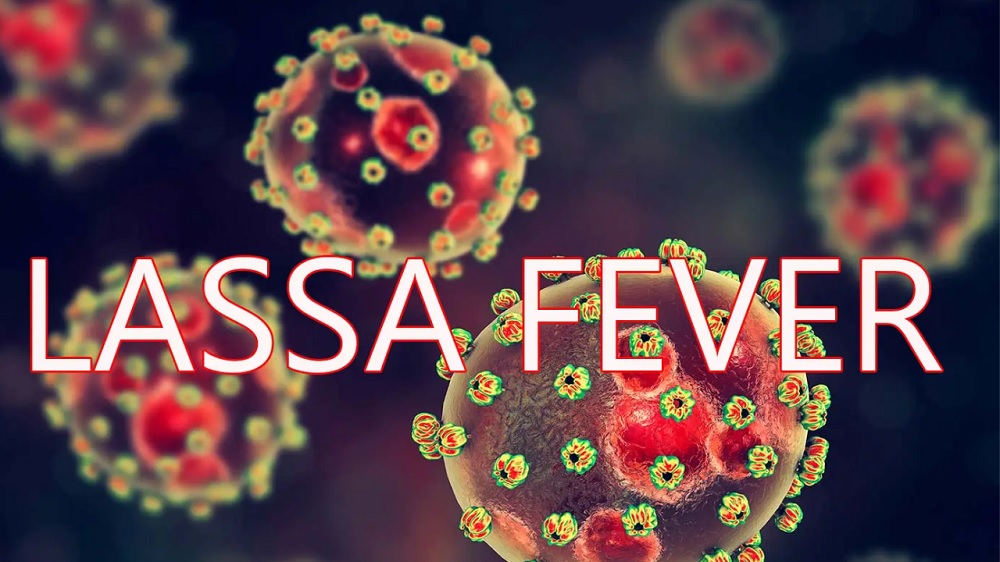Health
10 Things to Know About Asthma and How to Live Better with the Disease

According to the World Health Organization (WHO) and the Global Asthma Network, up to 334 million people worldwide may be suffering from asthma. In Africa, the prevalence ranges from 4 to 22%.
Doctor Ali Baddredine, a private pulmonologist based in the Senegalese capital Dakar, has enlightened us on the causes, symptoms, and tips for living better with asthma.
What is Asthma?.
Asthma is a chronic respiratory disease that manifests with difficult breathing and wheezing.
It causes difficult breathing and a feeling of suffocation caused by inflammation and contraction of the muscles around the airways, making breathing more difficult for the subject.
Asthma is a disease with no cure, but you can manage it.
“In fact, asthma is a chronic inflammatory disease of the lower airways, specifically the bronchial tubes, and it is defined by the presence of respiratory symptoms. These are the clinical signs, namely respiratory discomfort.
“That is why we call it wheezing Disney. It can also manifest itself as a dry cough or a feeling of chest tightness. All these symptoms vary in time and intensity,” Dr. Baddredine tells us.
Asthma is a disease that affects the lungs.
What are the symptoms of asthma?
Asthma affects the lungs: Symptoms can appear in the form of cough, wheezing, shortness of breath after more or less intense exercise, a feeling of tightness in the rib cage (in the chest), wheezing, or difficulty breathing normally.
“The frequency and intensity of asthma symptoms can differ from one person to another and depending on the time of the day. It is generally more common at night or early in the morning,” according to Dr. Ali Baddredine.
What are the contributing or triggering factors?
Several factors can trigger asthma symptoms or make them worse.
Genetic predisposition to allergy combined with external environmental factors often triggers the disease.
Inhaling irritating vapors or smoke can cause respiratory distress or an attack in a person who is asthmatic. Some smoke is particularly harmful, such as tobacco smoke, which contains many irritating substances that can aggravate inflammation of the bronchi and trigger an asthma attack.
Prolonged exposure to allergenic substances such as pollens, dust mites, dust, animal hair, mold, household aerosols, solvents, and certain perfumes can also trigger an asthma attack.
“You know that asthma is still a multifactorial disease where several factors are responsible for these manifestations to intervene.
“It has a genetic, hereditary component even if not all asthma is hereditary. And above all, you have the environmental factors, viral infections, pollution in particular, and allergenic exposures.
“You can also have asthma that has an allergic origin without forgetting the irritating factors, especially in our region with incense, atmospheric pollution with all these exhaust gases, temperature variations, air cooling, humidity levels, sand dust,” Dr. Baddredine points out.
What is the link between climate change and asthma?
People with asthma are among the most vulnerable to the effects of climate change. It acts in different ways on the respiratory health of people at risk.
It influences the health of the respiratory tract since the lungs are in direct contact with the outside world and are the first to be exposed to all types of irritation.
According to specialists, asthma attacks are often triggered by pollutants and allergens such as pollen, exhaust fumes (traffic pollution), air pollution (such as the one caused by forest fires), heatwaves, wildfires, dust storms, floods, and increased humidity.
All these elements lead to hyperreactivity because the asthmatic has branches that are hyperreactive, so these will react to the aggressive factors attacking the bronchial mucosa and the reaction that follows, which is bronchospasm or cough caused by different inflammatory phenomena,” Dr. Baddredine warns.
Who is at risk?
Asthma affects people of all ages but particularly younger people. Although the genetic factor is established, the transmission of asthma from parents to children is not systematic.
Although there is no typical profile of people prone to asthma, some people are more likely to develop asthma than others.
This includes people with a family history of asthma, allergic rhinitis or eczema, those born prematurely, children who have had severe and repeated respiratory infections (pneumonia, rhinovirus infection, respiratory syncytial virus, etc.), people who suffer from obesity, those exposed to second-hand smoke and air pollution for a long time, and those with gastroesophageal reflux disease.
According to Doctor Ali Baddredine, “we cannot strictly speak of people at risk because this is not a disease influenced by certain factors, so we cannot speak of risk.
It is true that when you have infants who have repetitive viral infections, it can promote what we call bronchial hyperreactivity, and it makes them wheezy and then asthmatic. But we cannot speak frankly about a population at risk.
It is not like, for example, high blood pressure, or those are subjects who are malnourished, who have excessive consumption of salt, of products that can lead to high blood pressure.
What is the difference between asthma and sinusitis?
Chronic sinusitis is often associated with asthma, but unlike asthma, which affects the lungs, sinusitis affects the sinuses. It is present in almost all patients with asthma symptoms.
The frequent association of asthma and sinusitis comes from the fact that people who suffer from allergic asthma have a greater risk of suffering from sinusitis due to greater sensitivity of their respiratory mucosa.
The specialist’s opinion: “Sinusitis is, in fact, inflammation of the upper airways, and the sinuses are particular, but it has a correlation. There is a similarity of the nasal-sinus and bronchial mucosa.
Not all asthma is associated with sinusitis, but when you have sinusitis, you have to start managing it because in the long run, as it is the same mucous membrane, the inflammation will go down from the upper airways to the lower airways, bronchial, and therefore turn into asthma.
How to treat asthma?
It is important to know that the best treatment for asthma remains prevention. This involves patient education.
To avoid an asthma attack, patients are advised not to smoke or frequent smoky places, to avoid exposure to factors that can trigger or promote the disease, and to avoid using products that can irritate the respiratory tract (like paints, glues, household products, etc.).
If avoiding triggers is not sufficient to maintain good symptom control, people with asthma are recommended to use inhaled corticosteroids, which can treat persistent inflammation in the airways.
“As we have said, it is a chronic inflammatory disease of the bronchi, which means that we must consider having basic treatment and regular monitoring. First of all, we must start by educating the patient. Patient education is awareness of the disease, how to prevent crises that are episodes that can make the disease more serious.
There is a whole therapeutic arsenal, but you actually have to educate the patient to use them correctly because there are different stages of asthma. In fact, you have asthma that we call latent because it does not manifest itself all the time, that is mild, intermittent during a stable period, with no symptoms.
On the other hand, you have some subjects who must be monitored with regular follow-up with the pulmonologist, a functional exploration that has made it possible to quantify asthma and adapt the basic treatment and classify it,” Dr. Ali Baddredine says.
Asthma symptoms can be controlled with inhaled medications.
Can asthmatic patients play sports?
Physical activity goes well and is even recommended when asthma is well controlled.
It is possible to reconcile illness and regular sporting activity. Sports allow the acquisition of good muscle mass and improve stress management in people with asthma.
“Sport is one of the cornerstones of treatment. You have athletes and great champions who are asthmatic; the whole point is to manage your asthma well, in fact, and there are treatments that prevent asthma and even asthma products that are not classified as doping products,” Dr. Baddredine notes.
Swimming and aquagym, cycling, walking at a good pace are beneficial for asthmatics.
Running, especially endurance running in cold weather, can cause asthma attacks. To prevent it, the asthmatic must take a bronchodilator 10 to 15 minutes before the race and do a careful warm-up.
Physical activities must be personalized and adapted according to the patient’s age and respiratory performance. People with asthma symptoms should consult a healthcare professional before engaging in sporting activity.
Does asthma kill?
Poorly controlled asthma can cause permanent symptoms.
“Oh yes, as much as asthma can be gentle, an attack can take the patient away. You have what we call severe acute asthma. This is a spontaneous serious crisis that can land the patient in intensive care.
There are some people who have interrupted their treatment without medical advice and who have a particular psychological context because there is a psychogenic component of severe asthma attacks, and it is like that especially for adolescents, young girls.
Despite all the therapeutic arsenal we have, we must also not forget that sometimes there are some diagnostic errors, which can be an overdiagnosis of asthma. We can have subjects who have died of what we call an asthma equivalent, especially elderly subjects; they have what we call pseudo-cardiac asthma.
So sometimes we say they died of asthma when they died of another disease that resembles asthma, especially in the elderly,” Dr. Ali Baddredine warns.
Asthma can be a serious illness, but it can also be managed with appropriate treatment.
Poorly controlled asthma can cause irreversible symptoms and lead to an attack or respiratory distress, and that can be fatal.
During an attack, the opening of the bronchi is reduced due to a significant inflammatory reaction and contraction of the muscles in the wall of the bronchi. Normal breathing becomes almost impossible for the patient.
Although attacks can be effectively calmed by medication, they are potentially dangerous, especially in vulnerable people (young children, elderly people, those suffering from a respiratory infection, etc.).
Inflammation of the respiratory tract produces thick mucus inside the bronchi, and this hinders air circulation.
Living with asthma is a difficult challenge, but it is not impossible to meet as long as you follow a few daily rules.
By adopting a healthy lifestyle, avoiding triggers, and following appropriate treatment, it is possible to control the disease and lead a full and active life, virtually symptom-free.
Health
SAD! Lassa Fever Claims 127 Lives Across 18 States in Nigeria(List)

The Nigeria Centre for Disease Control and Prevention (NCDC) has reported a sharp rise in Lassa fever cases, with 127 deaths confirmed across 18 states as of April 6, 2025.
According to the agency’s latest situation report, 674 people have tested positive for the virus out of 4,025 suspected cases recorded between January and early April.
The current Case Fatality Rate (CFR) stands at 18.8%, slightly higher than the 18.5% recorded during the same period in 2024, indicating a worrying upward trend.
The most affected states include Taraba (31 deaths), Ondo (26), Edo (17), Bauchi (12), and Ebonyi (11). Other states with reported fatalities are Gombe (7), Kogi (4), Benue (4), Nasarawa (4), Plateau (5), Kaduna (2), and one death each in Enugu, Delta, Cross River, and Ogun.
The report also highlights that 71% of confirmed cases were concentrated in Ondo (30%), Bauchi (25%), and Edo (16%), with the remaining 29% spread across 15 other states. The virus has now reached 93 local government areas nationwide.
Lassa fever is a viral haemorrhagic illness transmitted mainly through exposure to food or household items contaminated by infected rodents, particularly the multimammate rat. It can also spread through direct contact with the blood, urine, feces, or other bodily secretions of an infected person.
The disease predominantly affects people between the ages of 21 and 30, with a male-to-female ratio of 1:0.8, according to NCDC data.
In response to the outbreak, the NCDC has activated the National Lassa Fever Multi-Partner, Multi-sectoral Incident Management System to strengthen surveillance, case management, risk communication, and coordination efforts at all levels.
As the country continues to battle the spread of the virus, the NCDC is urging citizens to maintain proper hygiene, store food in rodent-proof containers, and seek immediate medical attention if symptoms such as fever, headache, sore throat, chest pain, or vomiting occur
Health
FG identifies 1,277 persons for monitoring as Lassa fever kills 122

The Nigeria Centre for Disease Control and Prevention has listed 1,277 persons for follow-up over the possibility of being infected with Lassa fever. This follows the centre recording 659 confirmed cases out of 3,779 suspected cases and 122 deaths in 13 weeks (from January to March 30, 2025).
A report obtained from the NCDC on Friday indicated that no fewer than 18 states across the country have recorded Lassa fever cases, with Ondo, Bauchi, and Edo being the most affected.
The report partly reads, “Cumulatively, in week 13 of 2025, 122 deaths have been reported, with a Case Fatality Rate of 18.5%, which is lower than the CFR for the same period in 2024 (18.7%).
“In total for 2025, 18 states have recorded at least one confirmed case across 93 Local Government Areas. Seventy-one per cent of all confirmed Lassa fever cases were reported from these three states (Ondo, Bauchi, and Edo), while 29% were reported from 15 other states with confirmed Lassa fever cases. Of the 71% of confirmed cases, Ondo reported 30%, Bauchi 25%, and Edo 16%.
“The predominant age group affected is 21-30 years (Range: 1 to 94 years, Median Age: 30 years). The male-to-female ratio for confirmed cases is 1:0.8. The number of suspected cases increased compared to that reported for the same period in 2024. No new healthcare worker was affected in week 13. The National Lassa fever multi-partner, multi-sectoral Incident Management System (IMS) was activated to coordinate the response activities at all levels.”
The report shows that the contacts under follow-up number 1,277, while the contacts that have completed follow-up total 1,448.
According to the NCDC, the disease has affected 20 healthcare workers in eight states so far this year.
Lassa fever is an acute viral haemorrhagic fever caused by the Lassa virus. The natural reservoir for the virus is the multimammate rat (also known as the African rat), although other rodents can also act as carriers.
The public health institute stated that Lassa fever cases occur year-round, with peak transmission periods typically from October to May.
Health
WHO calls for countries to address disruptions to TB services

In the wake of massive cuts in US funding, the World Health Organization (WHO) today called on global health leaders, donors, and policymakers to protect and maintain tuberculosis (TB) care and support services around the world.
In a statement issued ahead of World Tuberculosis Day (March 24), the WHO said the “drastic and abrupt” cuts to global health funding threaten to reverse gains made in global efforts to combat TB, which remains the world’s deadliest infectious disease. Those efforts have saved an estimated 79 million lives worldwide since 2000, the organization said.
“The huge gains the world has made against TB over the past 20 years are now at risk as cuts to funding start to disrupt access to services for prevention, screening, and treatment for people with TB,” said WHO Director-General Tedros Adhanom Ghebreyesus, PhD. “But we cannot give up on the concrete commitments that world leaders made at the UN General Assembly just 18 months ago to accelerate work to end TB. WHO is committed to working with all donors, partners and affected countries to mitigate the impact of funding cuts and find innovative solutions.”
USAID cuts have crippled TB control efforts
While the statement does not specifically mention the US Agency for International Development (USAID), the Trump administration’s freeze of USAID funding, and the subsequent canceling of thousands of contracts issued by the agency, have left a gaping hole in funding for TB prevention, screening, and treatment services. The US government has been the leading bilateral donor to global TB control efforts, contributing $200 million to $250 million annually—roughly one quarter of international donor funding for the disease.
The WHO said 27 countries are facing crippling breakdowns in their TB response, with the biggest impact seen in high-TB burden countries in Africa, Southeast Asia, and the Western Pacific. Among the services that have been disrupted are diagnosis, active case finding, screening, and contact tracing, and those disruptions are resulting in delayed detection and treatment and increased transmission risk. Drug supply chains, laboratory services, and data and surveillance systems have also been undermined.
A recent update from StopTB Partnership, which works on TB response with more than 2,000 partners in 100 countries, provides some detail on the services affected by the USAID funding cuts. In Cambodia, active case finding has halted in half the country, resulting in 100,000 people missing TB screening and 10,000 cases of drug-susceptible (DS)-TB going undetected. In Kenya, sputum sample transport once supported by USAID has halted, affecting the diagnosis of DS- and drug-resistant (DR)-TB. In India, USAID-funded TB screening projects in vulnerable groups have stopped.
The huge gains the world has made against TB over the past 20 years are now at risk as cuts to funding start to disrupt access to services for prevention, screening, and treatment for people with TB.
Those are just three of dozens of examples. In a news release today, StopTB Partnership Executive Director Lucica Ditiu, MD, echoed Tedros’s call for action.
“People with TB need us,” Ditiu said. “We have to remain strong, and we can never ever give up the fight. Through innovative, global and national efforts and standing together, we will be able to achieve these targets of ensuring TB prevention, treatment, and care are accessible to all.”
TB was responsible for an estimated 1.25 million deaths in 2023, according to the WHO’s most recent annual report. An estimated 8.2 million people were newly diagnosed with the disease—the most cases in a year recorded by the WHO since it began global TB monitoring in 1995. High-burden TB countries have only recently begun to recover from the disruptions caused by the COVID-19 pandemic, which the WHO estimates resulted in 700,000 excess TB deaths.
Cuts exacerbate funding shortfalls
As the WHO notes, the funding cuts come amid what was already a shortfall in funding for global TB control efforts. In 2023, $5.7 billion was available for TB prevention, diagnostic, and treatment services in low- and middle-income countries, but that’s only 26% of the 2027 target goal of $22 billion. TB research is receiving just one fifth of its 2022 target of $5 billion. Cuts to US funding are only going to exacerbate the problem.
In a joint statement issued earlier this week, Tedros and the Civil Society Task Force on Tuberculosis called on countries to take urgent action to prevent any disruption to TB services, ensure domestic resources to sustain equitable and essential TB care, and safeguard essential TB drugs, diagnostics, care, and social protection coverage for TB patients. They also urged the establishment of national partner platforms that would bring together public and private sectors, civil society, nongovernmental organizations, professional societies, and donors to maintain momentum against TB in affected countries.
“This urgent call is timely and underscores the necessity of swift, decisive action to sustain global TB progress and prevent setbacks that could cost lives,” said Tereza Kasaeva, PhD, director of WHO’s Global Programme on TB and Lung Health, in today’s WHO news release.
-

 News21 hours ago
News21 hours agoBREAKING: Unknown gunmen reportedly storm Senator Natasha’s family residence
-

 News24 hours ago
News24 hours agoSnub story on removal of Rivers Sole Administrator, it’s FAKE-Chief Registrar
-

 News23 hours ago
News23 hours agoSAD! Again, Alleged Herdsmen Attack Three Benue Communities
-

 News15 hours ago
News15 hours agoAbuja light rail project must be commissioned on May 29-Wike vows
-

 News21 hours ago
News21 hours agoLawmaker Slams NBA Over Rivers Crisis, Demands Return of N300m
-

 Politics23 hours ago
Politics23 hours agoPDP govs are jokers, can’t stop coalition train, Atiku boasts
-

 News16 hours ago
News16 hours agoJust in: Alleged Herdsmen Armed With AK-47 Rifles Take Over Communities In Benue State
-

 News6 hours ago
News6 hours agoTinubu Remains Engaged In Governance From Europe, Will Return After Easter – Presidency


















